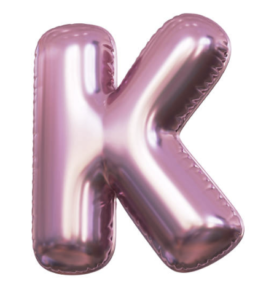How to Teach the K Sound
The /k/ sound should be developed by age 4, according to the Iowa-Nebraska Norms. However, it is not uncommon for this sound to not emerge by the expected age. If that happens, a child is often referred to a Speech-Language Pathologist for an evaluation and therapy. Below are a few tips on how to teach the K sound and ideas for practice activities ⬇️

Eliciting the K Sound
The /k/ sound is voiceless and produced with the back of the tongue (or base of the tongue) touching the top of the mouth (or soft palate). Here are four elicitation techniques to teach the /k/ sound. You can try them separately or in combination with each other.
1. Hold the Tongue Tip Down
Most clients substitute t/k as in “tat” for “cat.” Since the /t/ sound is produced with the tip of the tongue up behind the top teeth, have the client hold their tongue tip down with a finger, popsicle stick, or candy. This may help them start to use the back of the tongue to produce the target /k/ sound.
2. Lie on the Floor
Since /k/ is produced with the back of the tongue touching the back of the mouth, let gravity help out and have the client lie on the floor while practicing.
3. Pretend to Cough
Have the client pretend to cough and say /k/. After a few trials, have the client say words that start with /k/ by starting with a cough.
4. Tactile Cue
To help the client know where the /k/ sound should come from, place your pointer finger where the jaw meets the neck and gently press up.
For tricky words, view my post on Articulation Therapy Techniques for Tricky Words.
The G Sound
The /g/ sound is produced just like /k/, with the back of the tongue touching the roof of the mouth, but it is voiced. I rarely work on only /g/. I usually teach /k/ first and then sprinkle in /g/ words over time. The elicitation techniques are the same, just remind the client to turn their voice on.
Activities for Practicing the K and G Sounds
When first teaching a sound, stick with words or phrases that are easy for the client and that they can say over and over. A few examples are below.
- Play a board game and have the client say “go” before taking a turn
- Make a piece of art and have the client say the word “color” before coloring a design. To work on phrases, have the client say “color” + a color word (e.g., color blue)
- Play a game that requires taking turns and have the client say “Can I” before taking a turn
- Pretend to feed a stuffed animal candy and have the client say “candy.” To make it a phrase, add a word before or after, such as “eat candy.”
- Play with a ball and have the client say “catch” before they throw the ball to you. To make it a phrase, have the client add “catch ball.”
View my articulation cards for velars /k,g/ HERE. What elicitation techniques do you use for /k/ and /g/? What are your favorite activities for /k/ and /g/? Let us know below ⬇️
